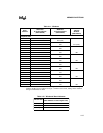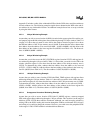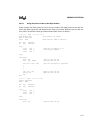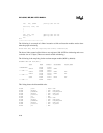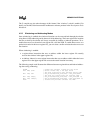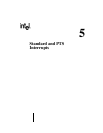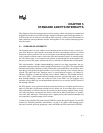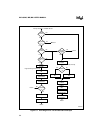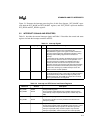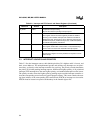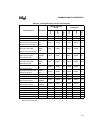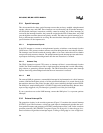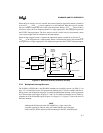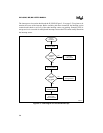
5-1
CHAPTER 5
STANDARD AND PTS INTERRUPTS
This chapter describes the interrupt control circuitry, priority scheme, and timing for standard and
peripheral transaction server (PTS) interrupts. It discusses the three special interrupts and the sev-
en PTS modes, four of which are used with the EPA to provide a software serial I/O channel for
both synchronous and asynchronous transfers and receptions. It also explains interrupt program-
ming and control.
5.1 OVERVIEW OF INTERRUPTS
The interrupt control circuitry within a microcontroller permits real-time events to control pro-
gram flow. When an event generates an interrupt, the device suspends the execution of current
instructions while it performs some service in response to the interrupt. When the interrupt is ser-
viced, program execution resumes at the point where the interrupt occurred. An internal periph-
eral, an external signal, or an instruction can generate an interrupt request. In the simplest case,
the device receives the request, performs the service, and returns to the task that was interrupted.
This microcontroller’s flexible interrupt-handling system has two main components: the pro-
grammable interrupt controller and the peripheral transaction server (PTS). The programmable
interrupt controller has a hardware priority scheme that can be modified by your software. Inter-
rupts that go through the interrupt controller are serviced by interrupt service routines that you
provide. The upper and lower interrupt vectors in special-purpose memory (see Chapter 4,
“Memory Partitions”) contain the interrupt service routines’ addresses. The peripheral transac-
tion server (PTS), a microcoded hardware interrupt processor, provides high-speed, low-over-
head interrupt handling; it does not modify the stack or the PSW. You can configure most
interrupts (except NMI, trap, and unimplemented opcode) to be serviced by the PTS instead of
the interrupt controller.
The PTS supports seven special microcoded routines that enable it to complete specific tasks in
much less time than an equivalent interrupt service routine can. It can transfer bytes or words,
either individually or in blocks, between any memory locations; manage multiple analog-to-dig-
ital (A/D) conversions; and transmit and receive serial data in either asynchronous or synchro-
nous mode (MC, MD only). PTS interrupts have a higher priority than standard interrupts and
may temporarily suspend interrupt service routines.
A block of data called the PTS control block (PTSCB) contains the specific details for each PTS
routine (see “Initializing the PTS Control Blocks” on page 5-24). When a PTS interrupt occurs,
the priority encoder selects the appropriate vector and fetches the PTS control block (PTSCB).



